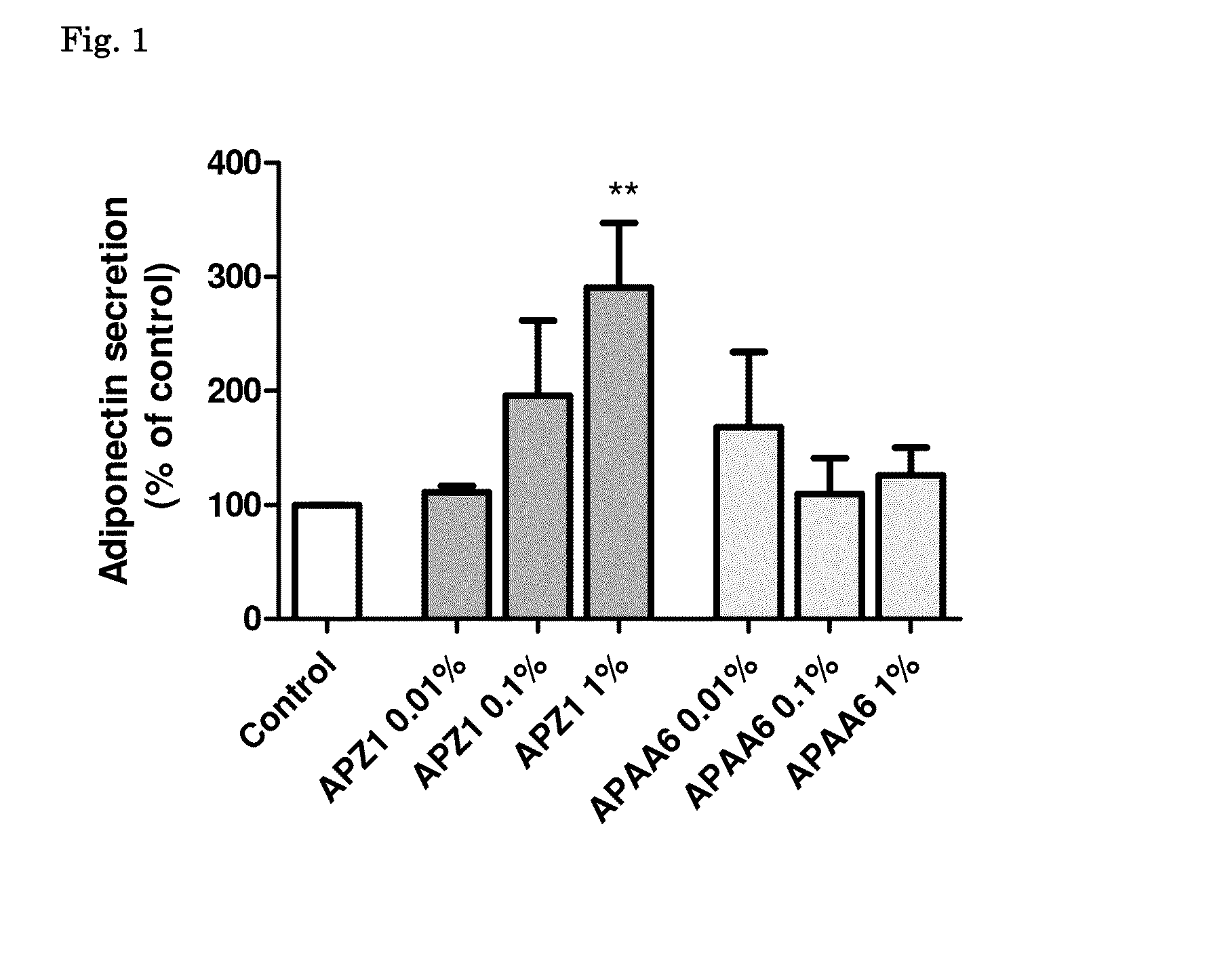Nutritional Composition Containing a Peptide Component with Adiponectin Simulating Properties and Uses Thereof
a technology of adiponectin and a composition is applied in the field of nutritional compositions, which can solve the problems of obesity, especially childhood obesity, and achieve the effects of promoting healthy body fat percentage, healthy body weight and/or healthy body fat mass, and healthy body weigh
- Summary
- Abstract
- Description
- Claims
- Application Information
AI Technical Summary
Benefits of technology
Problems solved by technology
Method used
Image
Examples
example 1
[0136]Example 1 describes the process by which subcutaneous adipose tissue was exposed to a certain casein hydrolysate fraction.
[0137]Subcutaneous adipose tissue was obtained from healthy lean or moderately overweight women undergoing plastic surgery. The procedure was approved by the ethical committee of the Heinrich-Heine-University (Düsseldorf, Germany). Preadipocytes were isolated by collagenase digestion. Isolated cell pellets were resuspended in DMEM / F12 medium supplemented with 10% FCS, seeded in six-well or 12-well culture dishes, respectively, and maintained at 37° C. with 5% CO2. After reaching confluence (day 0 of differentiation), cell cultures were incubated incubated in an adipocyte differentiation medium (DMEM / F12, 33 mM biotin, 17 mmol / l d-panthothenic-acid, 66 nM insulin, 1 nM triiodo-L-thyronine, 100 nM cortisol, 10 mg / ml apo-transferrin, 50 mg / ml gentamycin, 0.25 mg / ml amphotericin B, 15 mM HEPES, 14 nM NaHCO3, pH 7.4) with troglitazone (5 μM) for 3 days. Once dif...
formulation examples
[0144]Table 3 provides an example embodiment of a peptide component including 5 peptides from Table 1 and 3 peptides selected from Table 2 that may comprise the peptide component described herein
TABLE 3Nutrition profile of an example peptide componentExample of Selected Peptidesfor Peptide ComponentSEQ ID NO 5SEQ ID NO 24SEQ ID NO 33SEQ ID NO 56SEQ ID NO 64SEQ ID NO 13SEQ ID NO 24SEQ ID NO 60
[0145]Table 4 provides an example embodiment of a peptide component including 5 peptides from Table 1, 3 peptides selected from Table 2, and an additional 10 peptides from Table 1 that may comprise the peptide component described herein.
TABLE 4Nutrition profile of an example peptide componentExample of Selected Peptidesfor Peptide ComponentSEQ ID NO 13SEQ ID NO 24SEQ ID NO 60SEQ ID NO 5SEQ ID NO 11SEQ ID NO 22SEQ ID NO 25SEQ ID NO 33SEQ ID NO 45SEQ ID NO 46SEQ ID NO 47SEQ ID NO 48SEQ ID NO 52SEQ ID NO 34SEQ ID NO 36SEQ ID NO 61SEQ ID NO 62SEQ ID NO 64
[0146]Table 5 provides an example embodiment ...
PUM
| Property | Measurement | Unit |
|---|---|---|
| pH | aaaaa | aaaaa |
| pH | aaaaa | aaaaa |
| pH | aaaaa | aaaaa |
Abstract
Description
Claims
Application Information
 Login to View More
Login to View More - R&D
- Intellectual Property
- Life Sciences
- Materials
- Tech Scout
- Unparalleled Data Quality
- Higher Quality Content
- 60% Fewer Hallucinations
Browse by: Latest US Patents, China's latest patents, Technical Efficacy Thesaurus, Application Domain, Technology Topic, Popular Technical Reports.
© 2025 PatSnap. All rights reserved.Legal|Privacy policy|Modern Slavery Act Transparency Statement|Sitemap|About US| Contact US: help@patsnap.com

